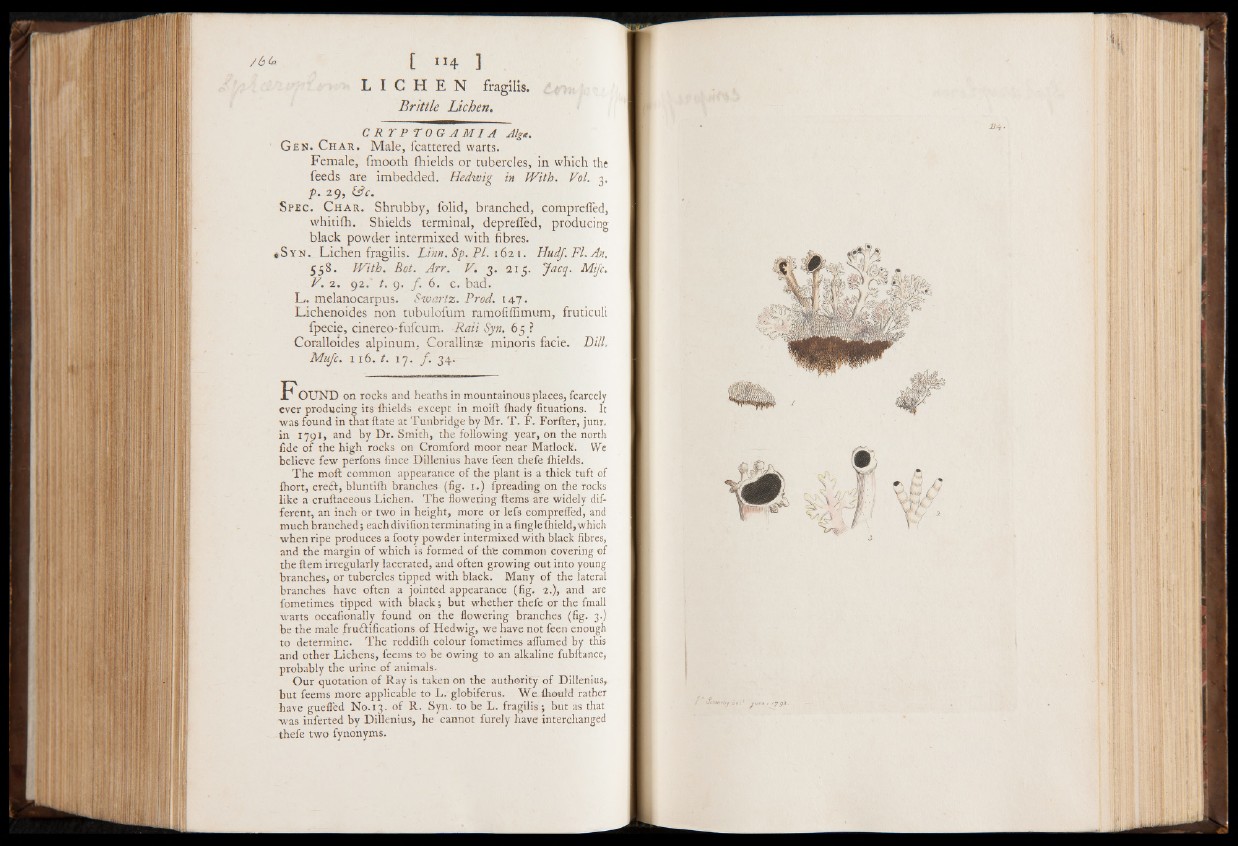
j 6 d? [ “ 4 ]
L I C H E N fragilis.
Brittle Lichen.
C R T P r OG A M I A Algt.
G e n . C h a r . Male, fcattered warts.
Female, fmooth fhields or tubercles, in which the
feeds are imbedded. Hedwig in With. Vol. 3.
■p. 29, &c.
S pec . C h a r . Shrubby, folid, branched, compreffed,
whitifh. Shields terminal, depreffed, producing
black powder intermixed with fibres.
»Sy n . Lichen fragilis. Linn. Sp. PI. 1621. Hud/.Fl.An.
5 5 8 . With. Bot. Arr. V. 3. 2 1 5 . Jacq. Mijc.
V. 2. 92/ t. 9. ƒ. 6. c. bad.
L. melanocarpus. Swartz. Prod. 147.
Lichenoides non tubulofum ramofiffimum, fruticuli
fpecie, cinereo-fufcum. Raii Syn. 65 ?
Coralloides alpinum, Coralline minoris facie. Bill.
Mujc. 116. t. 17. ƒ. 34.
F O U N D on rocks and heaths in mountainous places, fcarcely
ever producing its fhields except in moift fhady fituations. It
was found in that ftate at Tunbridge by Mr. T. F. Forfter, junr.
in 1 7 9 1 , and by Dr. Smith, the following year, on the north
fide of the high rocks on Cromford moor near Matlock. We
believe few perfons fince Dillenius have feen thefe fhields.
The moft common appearance of the plant is a thick tuft of
fhort, erect, bluntifh branches (fig. 1.) fpreading on the rocks
like a cruftaceous Lichen. The flowering Items are widely different,
an inch or two in height, more or lefs compreffed, and
much branched; eachdivifion terminating in a Anglefhield,which
when ripe produces a footy powder intermixed with black fibres,
and the margin of which is formed of the common covering of
the Item irregularly lacerated, and often growing out into young
branches, or tubercles tipped with black. Many of the lateral
branches have often a jointed appearance (fig. 2.), and are
fometimes tipped with black; but whether thefe or the fmall
warts occafionally found on the flowering branches (fig. 3.)
be the male fructifications of Hedwig, we have not feen enough
to determine. The reddifh colour fometimes affirmed by this
and other Lichens, feems to be owing to an alkaline fubfiancey
probably the urine of animals.
Our quotation of Ray is taken on the authority of Dillenius,
but feems more applicable to L. globiferus. We fhould rather
have guefled No.13 . of R. Syn. to be L. fragilis; but as that
was inferted by Dillenius, he cannot furely have interchanged
thefe two fynonyms.